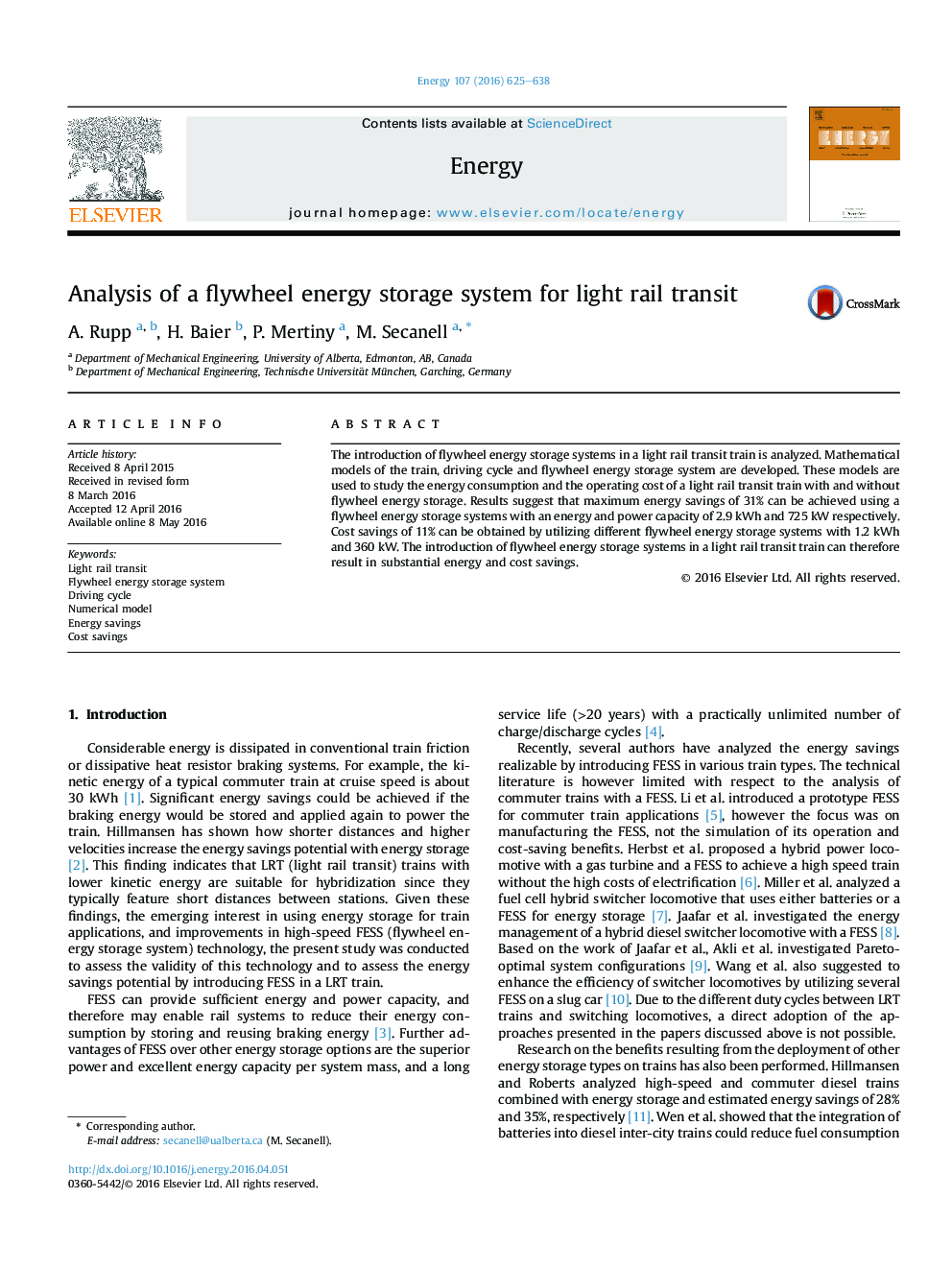| Article ID | Journal | Published Year | Pages | File Type |
|---|---|---|---|---|
| 1730868 | Energy | 2016 | 14 Pages |
•Mathematical models for train, driving cycle, and flywheel are developed.•Energy consumption and operating cost with and without flywheels are obtained.•Introducing FESS in an LRT can result in substantial energy and cost savings.•The maximum predicted energy saving is 31%.•The maximum estimated cost savings is 11%.
The introduction of flywheel energy storage systems in a light rail transit train is analyzed. Mathematical models of the train, driving cycle and flywheel energy storage system are developed. These models are used to study the energy consumption and the operating cost of a light rail transit train with and without flywheel energy storage. Results suggest that maximum energy savings of 31% can be achieved using a flywheel energy storage systems with an energy and power capacity of 2.9 kWh and 725 kW respectively. Cost savings of 11% can be obtained by utilizing different flywheel energy storage systems with 1.2 kWh and 360 kW. The introduction of flywheel energy storage systems in a light rail transit train can therefore result in substantial energy and cost savings.
